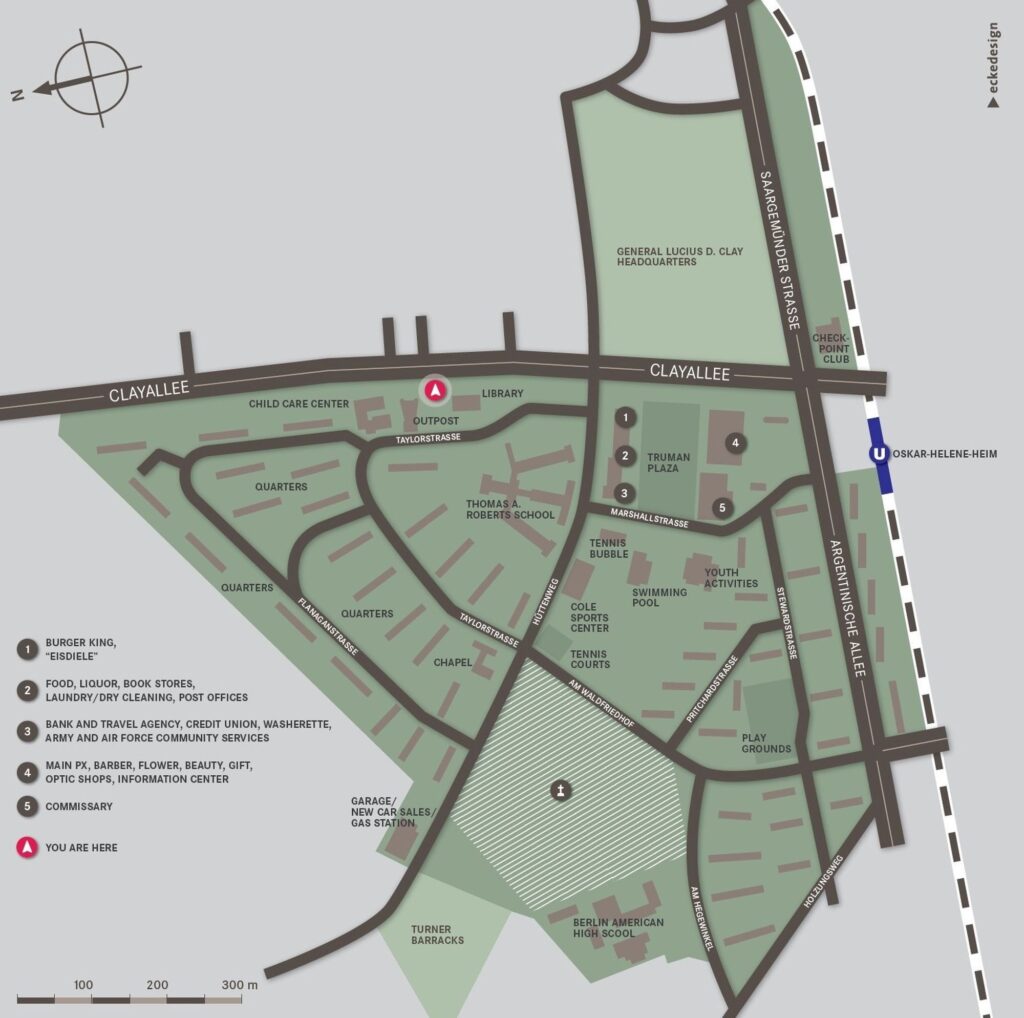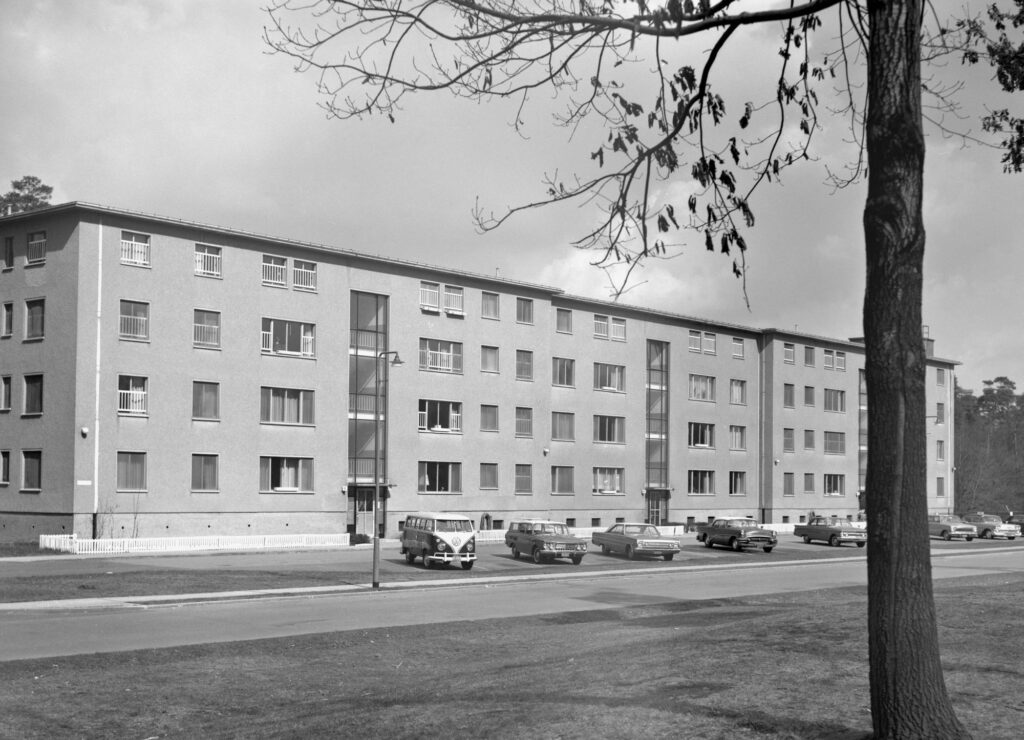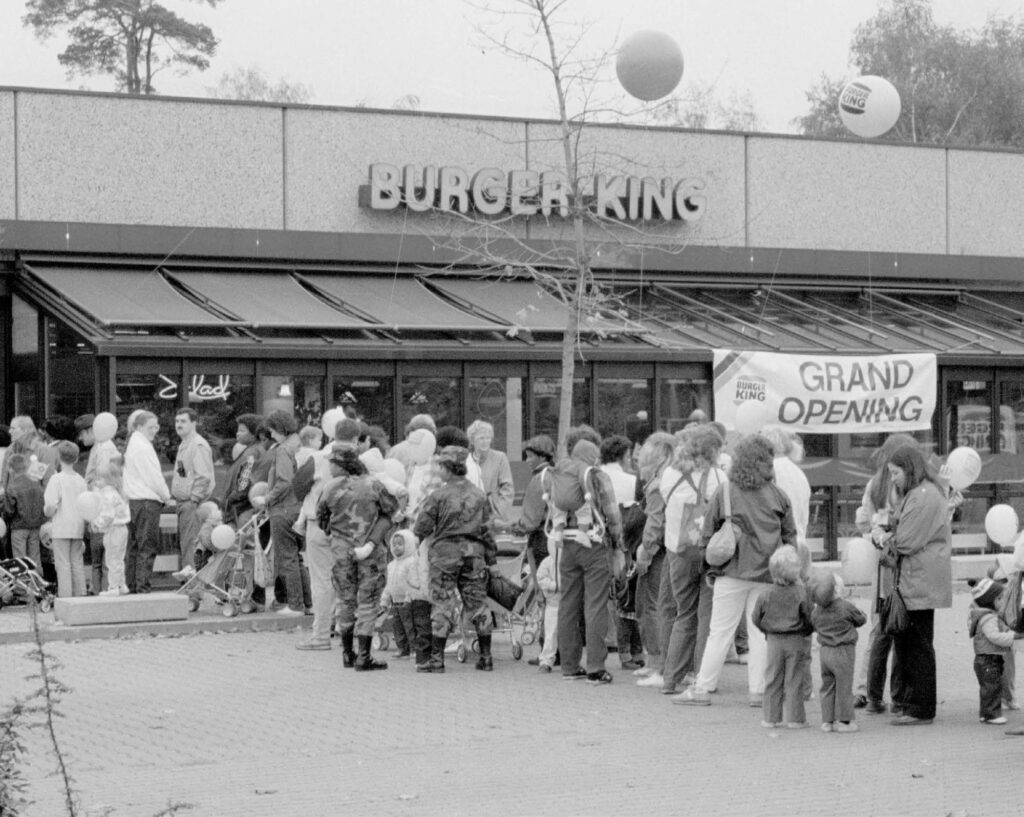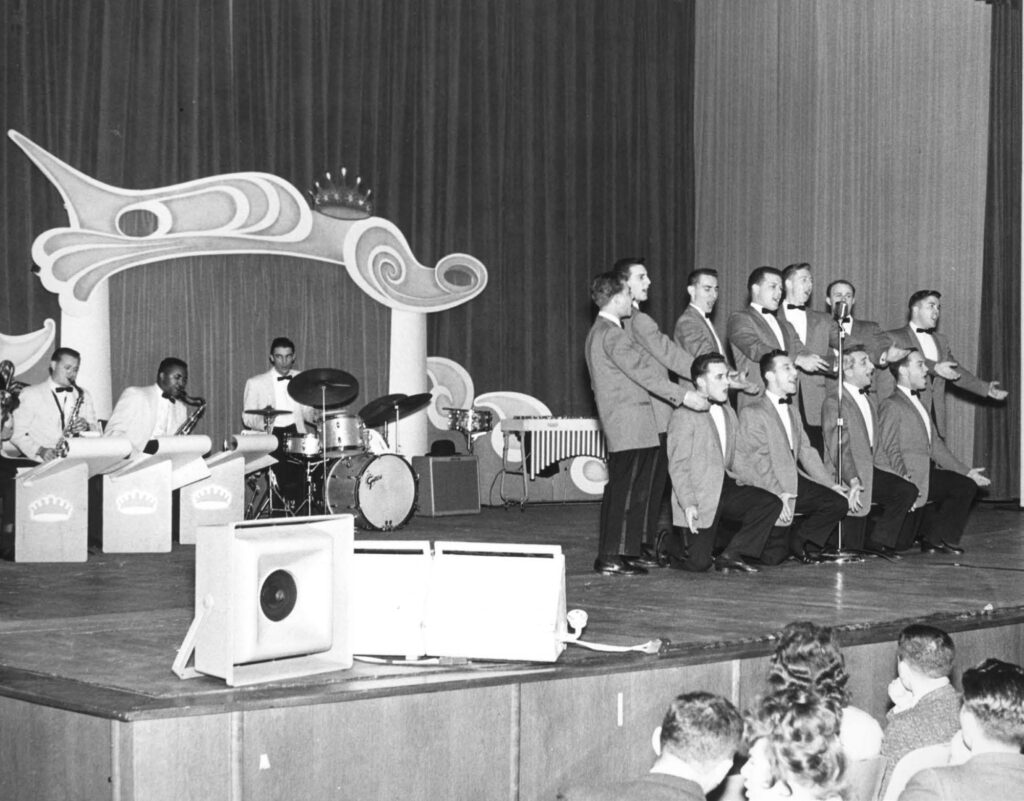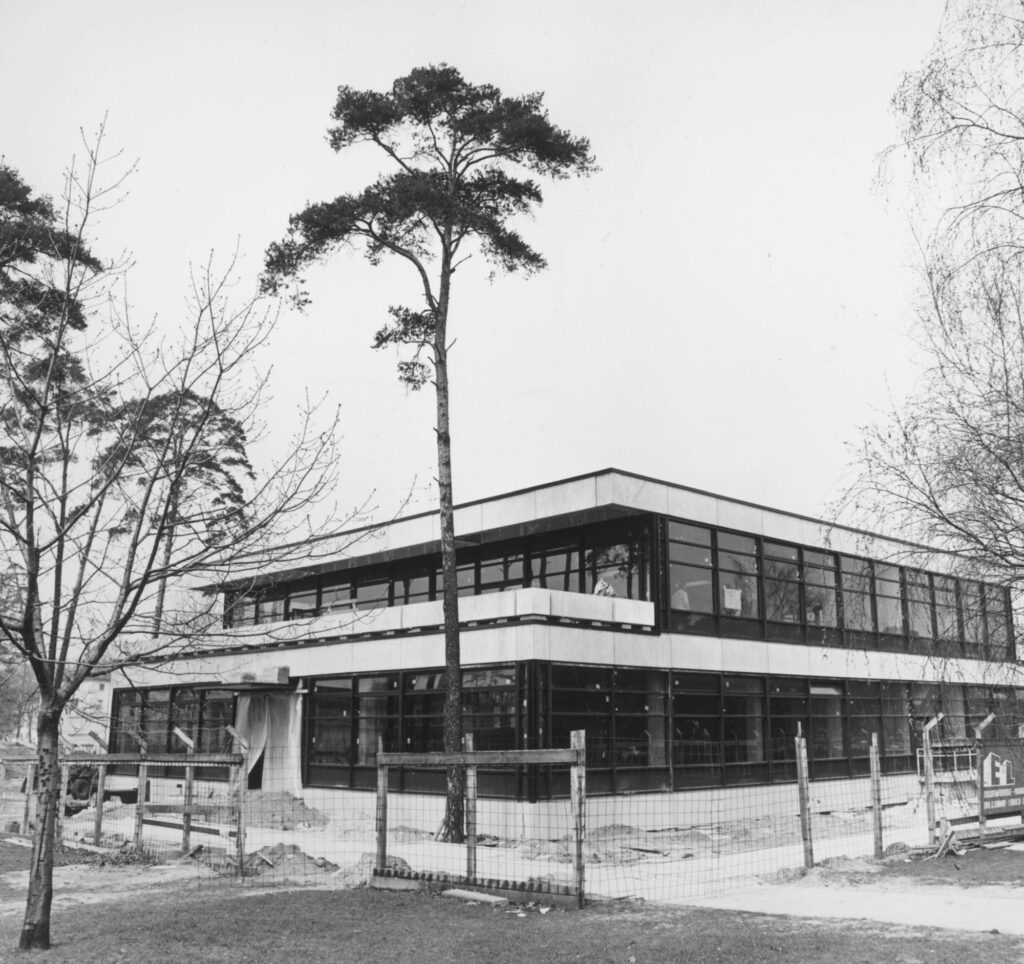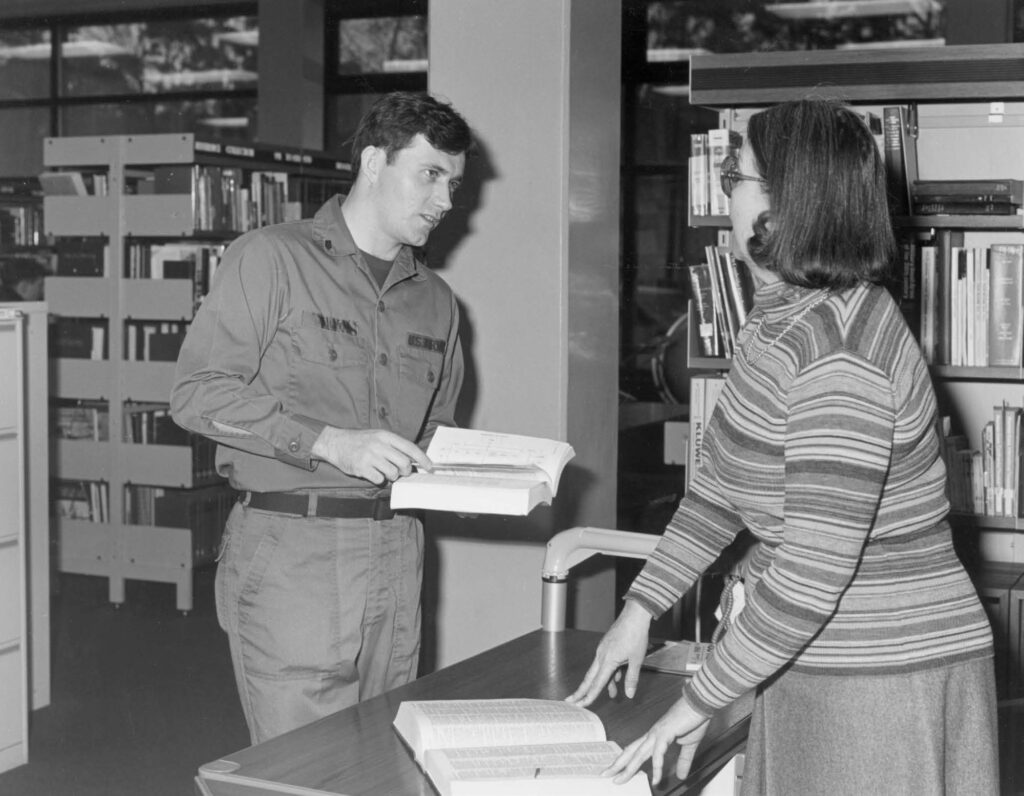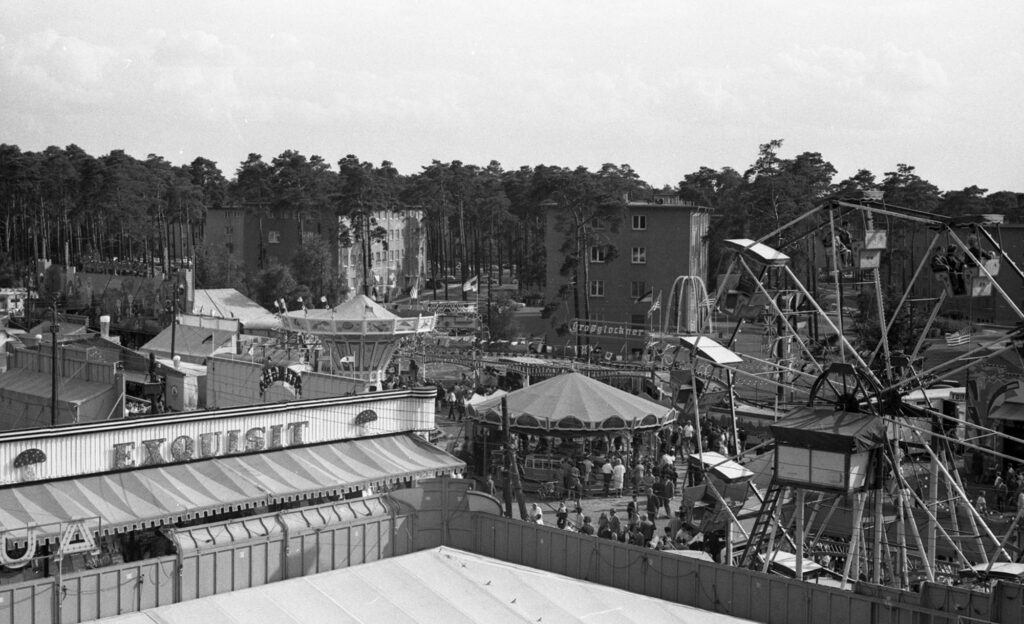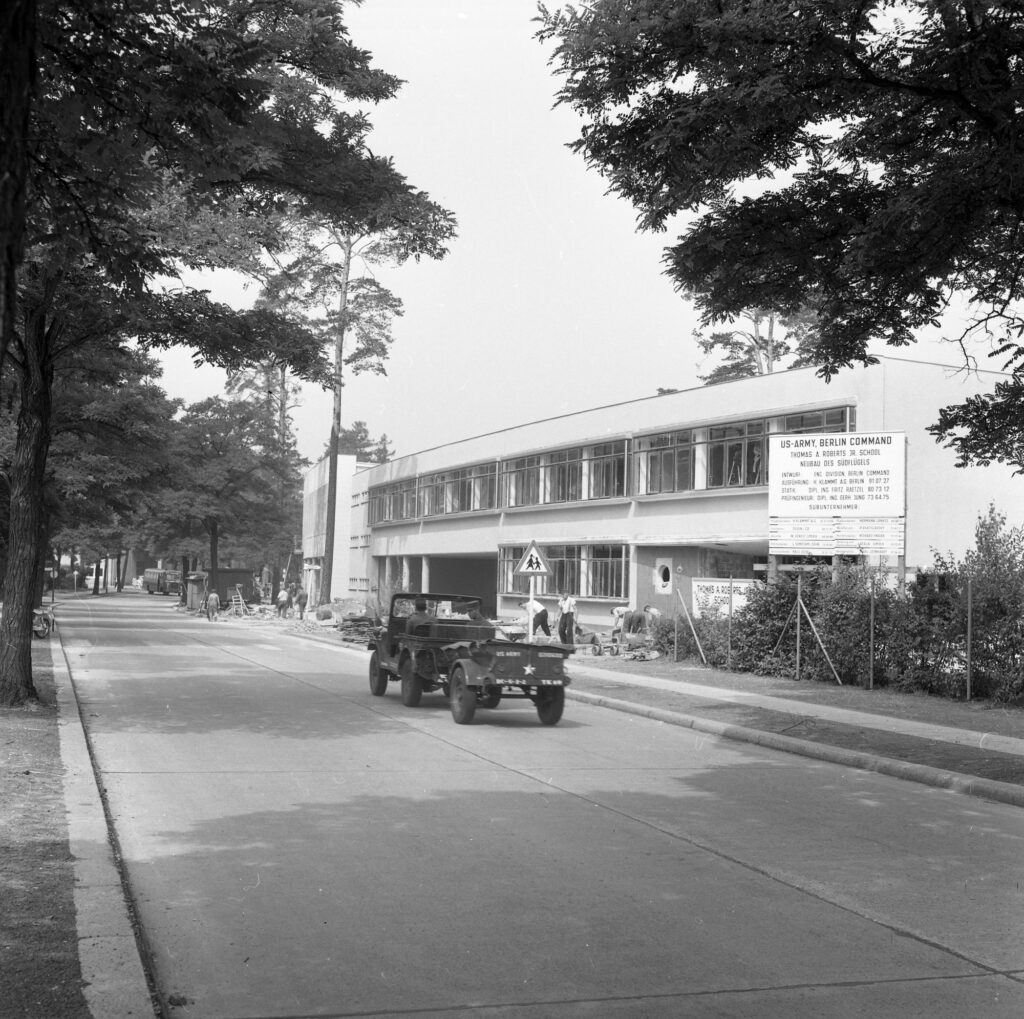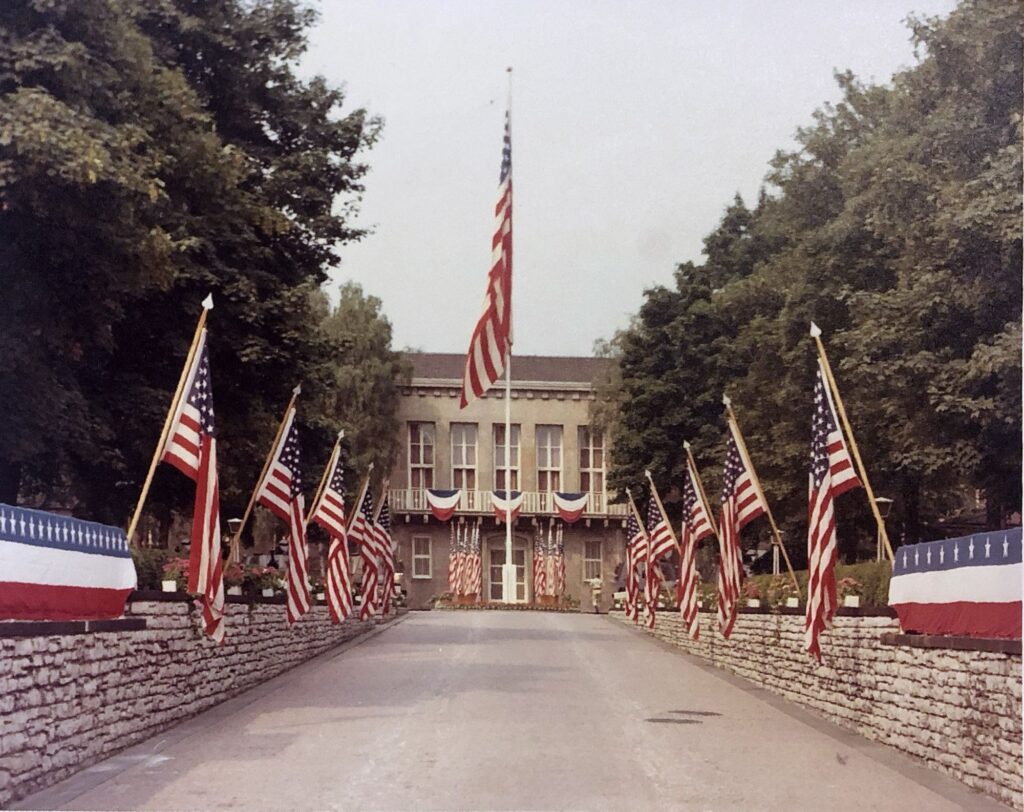The Allied Museum on historic ground
The Allied Museum is situated in the heart of the former American sector, on Clayallee in Berlin’s Zehlendorf district, the vibrant focal point of life in the American garrison. General Lucius D. Clay Headquarters, Truman Plaza shopping center, and the American Forces Network (AFN) radio station were all located in the immediate vicinity. The Cole Sports Center and United States Army Chapel on Hüttenweg were also nearby. The largest American housing area, now the Parkviertel Dahlem, is also adjacent to the Museum grounds.
The Museum site encompasses the former Outpost Theater, which has been designated a historic landmark, and the Nicholson Memorial Library.
In the little woods nearby stands a monument to Friedrich Wilhelm von Steuben (1730–1794), the Prussian officer and American general. In 1998, former US President George Bush unveiled a sculpture here by the artist Veryl Goodnight that commemorates the fall of the Wall.
The American Outpost Theater
The American national anthem was played before each screening at the Outpost Theater. If you arrived too late, you had to wait. A neon sign reading “National Anthem is playing now. Please wait“ informed moviegoers of this policy. The sign still hangs above the entrance to the former movie theater.

The architect of the Outpost Theater was Arnold Blauvelt. He was commissioned to build it by the US Army, and the style is reminiscent of the 1920s and 1930s. From its first opening in 1953, American soldiers and their families spent part of their leisure time here. With its 750 seats, it was considered the most modern movie theater belonging to the US armed forces in Europe. The first exhibition was shown here in September 1994, immediately before the Allied withdrawal from Berlin. Four years later, the newly founded Allied Museum opened the first part of its permanent exhibition in the Outpost Theater under the title, “How Enemies Became Friends.” The building was declared a historic landmark in 1995, which is why much of the movie theater’s charm and atmosphere have been preserved.
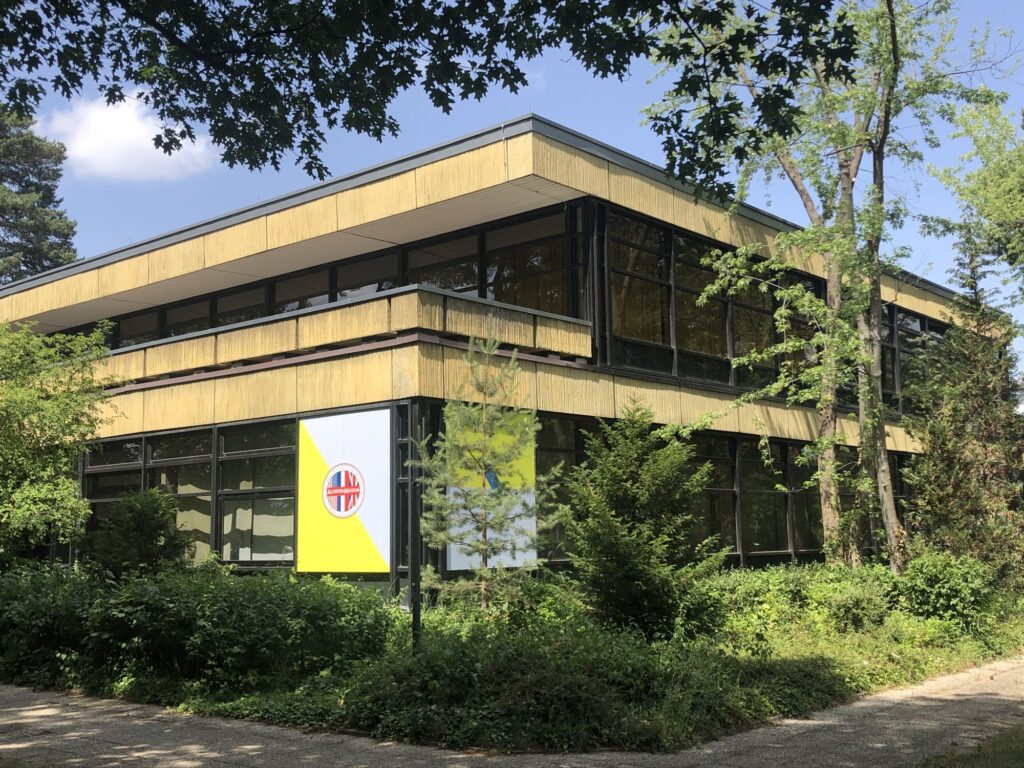
The American Garrison Library
The Major Arthur D. Nicholson Jr. Memorial Library, or Nicholson Memorial Library for short, was the US Armed Forces’ largest library in Berlin, with some 50,000 volumes. Since 1998, the library building has housed the second part of the Allied Museum’s permanent exhibition and the current temporary exhibitions.
The garrison library was named after Major Arthur D. Nicholson Jr., who was shot dead by a Soviet sentry in 1985 during a tour of inspection in the GDR. Nicholson belonged to the US Military Liaison Mission in Potsdam. Like members of the British and French missions, the Americans were allowed to move freely on GDR territory, albeit not in the restricted military areas. Nicholson’s tragic death did not merely cause an uproar in the Berlin garrison; it also seriously strained American-Soviet relations.
The Allied Museum at Tempelhof Airport
Refounding the Museum in Tempelhof
Twenty-five years after its founding, the Allied Museum faces new challenges. The refounding project at Tempelhof Airport is well underway. We expect to open at the new site in around ten years.

#InsideOutpost
A look behind the scenes at the Allied Museum
What is it like to work in a museum? Our collections manager Florian Pauls presents his fascinating work in the Allied Museum. Only in German.
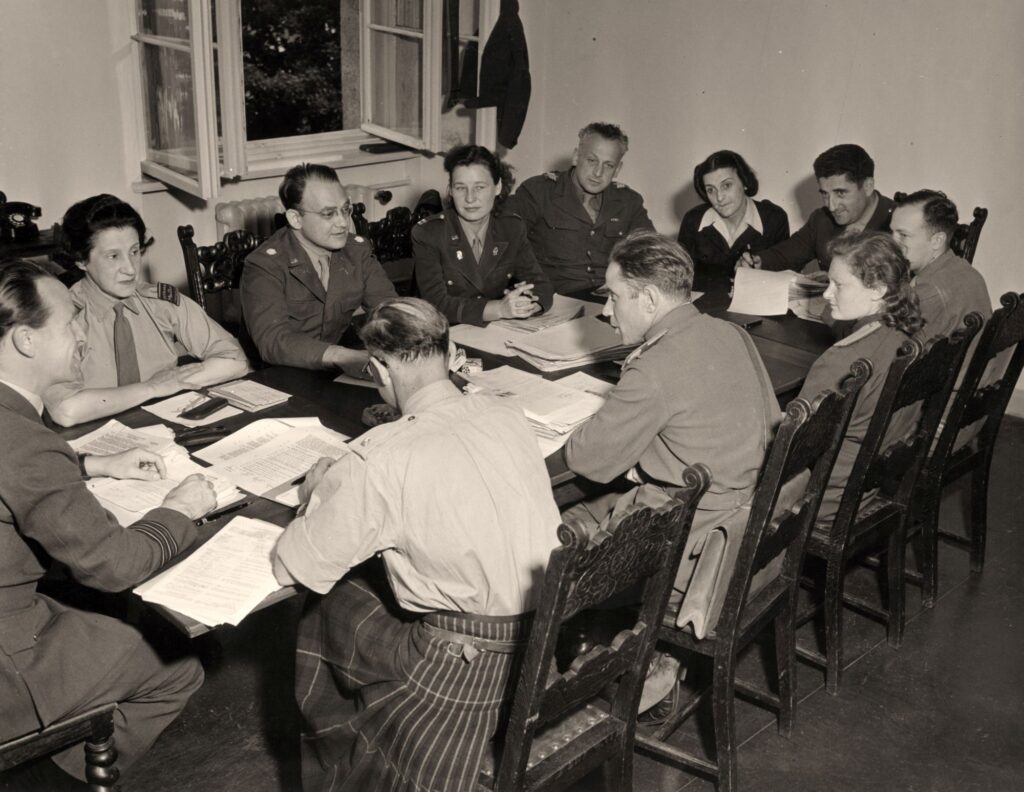
About us
Introducing the Allied Museum
We are a team of professionals from a wide variety of fields and are working together to develop future prospects for the Allied Museum.


